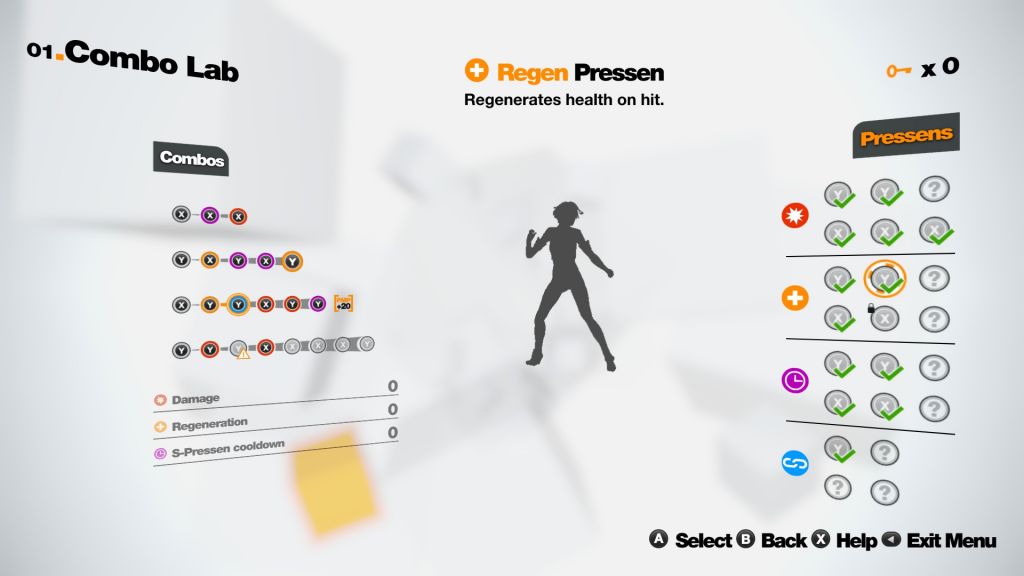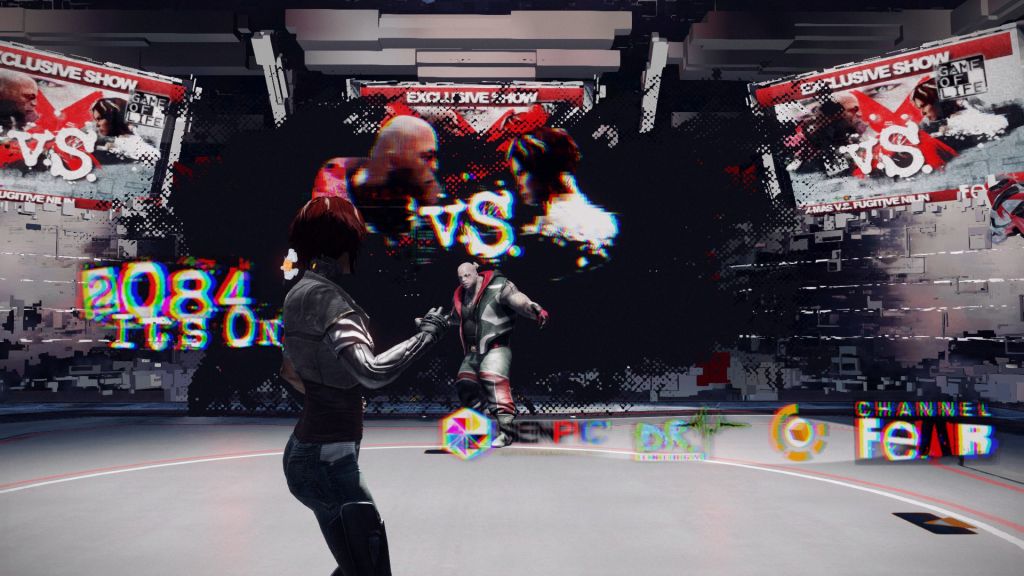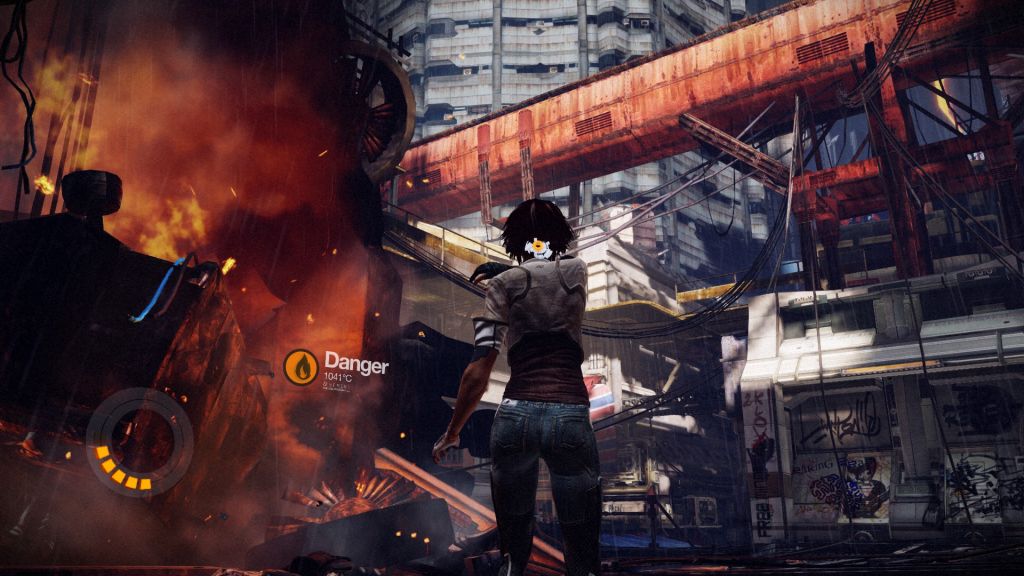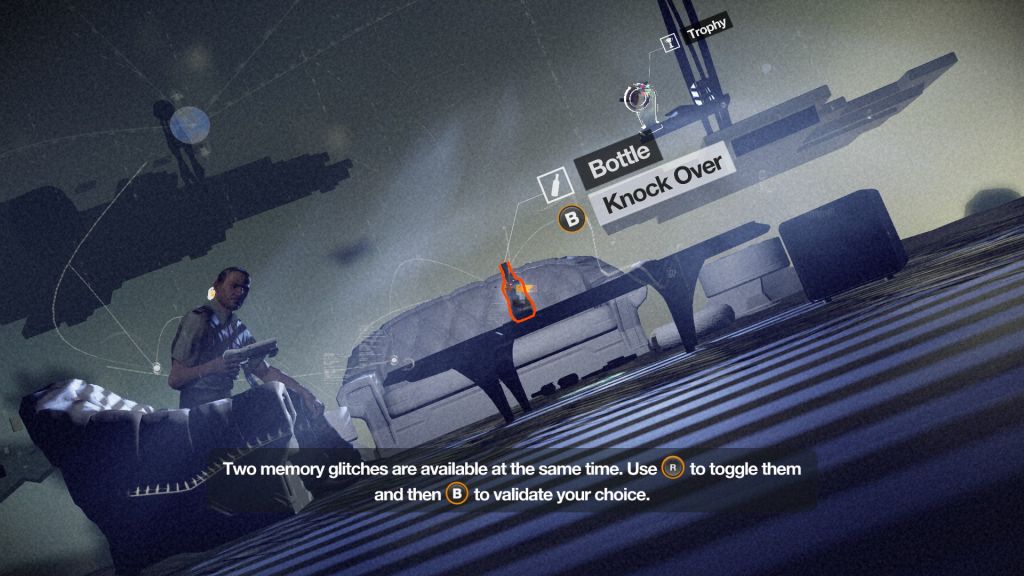Also on: PS3, XBox 360
Publisher: Capcom
Developer: DONTNOD Entertainment
Medium: Digital Download
Players: 1
Online: N/A
ESRB: M
This morning I told someone that I’m not a person who judges, even though in my spare time I think I’m qualified to critique games made by people far more talented than I. A similar conflict is what gave me the notion to request the review of Remember Me when it became an option– a game that when demoed back in 2012 looked to be ripping off mechanics from several successful franchises in under 10 minutes. So I packed my baggage and dove into Remember Me, a game with an identity crisis of its own. Sometimes you never know where a common interest will arise.
Remember Me starts out on a strong enough foot, dropping players into a universe where memories can cost money– especially the sexy ones (which we never get to see, despite an M rating). We’ll just have to assume that there’s a direct correlation between how sexy a memory is against what it probably costs to buy. Or copy. They’re never clear on that, either. Compare it to Total Recall or whatever other reference you’re most comfortable with, but it’s one of those “artificial emotions” stories that science fiction is tapping back into lately.
Of course, this doubles well as groundwork for why the main character is given amnesia in a lab somewhere in Neo Paris, 2084. And that’s just the first 15 seconds. Players will then fill the shoes of Nilin, on a quest to follow every instruction by a voice-in-your-head character, Edge, who breaks you out and helps you collect the outfit featured on the game’s boxart. You both agree that the secretly evil corporation who wiped your memory needs to be taken down, and thus begins the story arc. This involves a lot of jumping, climbing, punching, kicking, and I swear there was some punchkiching at one point. More importantly are the ways that developer DONTNOD has decided to approach a lot of familiar gameplay elements, along with some new additions of their own.
Combat has been dressed up with some character, with something called a Combo Lab, which essentially means a place to redistribute buffs to each of your attacks. These attacks are referred to as Pressens, which are really just the difference of a kick in the throat or punch in the throat, but with the added bonus of having one of four effects assigned to them when used in combat. Initially, the game’s customization of attack combos sounds like players will be able to completely design combos from the ground up, but the button assignments are pre-allotted, meaning you can’t make a fancy move out of a desired X-X-X-X-X-X-X layout. I know; take it up with the Combo Lab. Rather, the Pressens and individual moves unlocked throughout the game can be gradually activated in their preset sequence.
This means that the basic X-X-X combo you’re given to start building will begin with X, a normal attack, but the next one (X-X) can have a health regen perk assigned to it, distributing some health back to Nilin while you’re busy trying to figure out the timing of combos in the game. The third attack (X-X-X) can likewise have anything else attached to it, even a second health Pressen if you’re really having trouble acclimating to things. As combos become more extensive, the positioning of a Pressen will affect its effect by how far down the line it’s placed, and some thought may be required to find your perfect match.
At the end of the day, the Combo Lab and Pressen use gives players a menu system to draw up spells to combine cooldown effects with damage, chaining, and healing in the game’s combat. It’s a nice layer of mechanics to drape over what is otherwise combat modeled around modern melee standards, and without this coating would have left players with a dull placeholder for combat scenarios. The ability to pause and freely redistribute these effects is also a nice way of DONTNOD letting players tailor combos to the more complicated boss battles, which are the most interesting part of Remember Me’s traditional gameplay.
Bosses can be lengthy affairs, requiring Nilin to use certain abilities unlocked throughout the game, which will either stun, reveal, or provide the player with a temporary advantage. It’s been a while since a game asked us to strategically take down a boss by exploiting their weak point, huh? Well, at least this time the weak points aren’t just revealed by delivering a set amount of damage, or tricking someone into running into a wall. Well, at least when you trick that enemy into hitting a wall, it’s just at the early part of the game. Maybe you like that stuff, anyway. The point is that Remember Me’s combat requires a different approach to certain types of enemies, which is ramped up in boss fights where those previously mentioned enemies are going to be popping up in addition to the main event, and that’s enough to spice things up these days.
Unfortunately that’s the high-water mark of traditional gameplay in Remember me, since the platforming and navigation leave nothing to the imagination, nor ask from it. This is a world with great art direction, and we aren’t even given the ability to sample the universe in front of us. The environments may as well have been pre-rendered backdrops at the rate players will be tethered by, and that’s hugely disappointing. This is mostly due to the platforming being entirely dictated by navigation markers which denote not only that ledges are interactive, but save you the time of figuring out that no others are. I can understand wanting to tell a hand-crafted, linear story, but this is a few steps too far in the direction of a single hallway.
On the other hand, we are given a future world with slick, persistent notifications and public messages. There are some neat ideas sprinkled throughout the environments, and even incorporated into gameplay where Nilin gets to shadow a previous memory in the environment. Maybe it’s just nice to have a justified, practical solution for digital panels scattered throughout Neo Paris, but I was a little taken with this splash of style.
Remixing memories is the centerpiece of Remember Me, which take place at key points in the game where Nilin enters someone’s memory to trick them into thinking things played out differently. For the sake of brevity, she always knows exactly what memory and when specifically she should be editing it, presenting the players with an interactive scene which after viewing once can be fast-forwarded or rewound until the interactive elements appear. We have arrived at the reason to play Remember Me.
While these sections are no more than glorified adventure games, they’re handled so elegantly that DONTNOD tricks us into thinking we’re watching a short play unravel before our eyes, where the player can become the director– tipping over vases and unlatching seatbelts to alter the outcome of events. Of course, in memories nobody is really in danger, so the regular murdering that takes place can be brushed aside as ‘just a dream’ or something. Whether or not it sounds gimmicky to you, the fascinating side of Remember Me is revealed briefly as the developers scratch the surface of approaching interactive, real-time set pieces in a seemingly different way than anyone else has thought to do. The treat for players is that at the tail-end of a console generation, we’re given a glimpse into a new twist on gameplay in mainstream games that (while still mostly murdering people) allows users to experiment in a scenario to a variety of outcomes depending on the circumstances introduced to the original scene.
The relationship that DONTNOD is interested in having with videogames is what stands out in Remember Me, since their conversation with what big-budget games could be about is far more appealing than how creatively they have to think– in order to awkwardly mold it around an action-shaped game. The shame of it is that you won’t see remixes more than a handful of times, which while I’m sure are a design challenge of their own, have so much potential if you consider the possibility of navigating multiple branching memories alone. Instead of a scene, why not an entire play? DONTNOT is certainly getting the hang of executing these segments, so why not build a compelling puzzle game for 80% of the title with some of the interesting combat in the other 20%, instead of the other way around? Maybe in a sequel, or something.
If there’s a second reason to prance through Remember Me, it’s for the soundtrack by Olivier Deriviere, who delivers a score that’s not only engaging, but very well fits the style and energy in compliment to the art team’s design, and narrative team’s ambition. Unfortunately it’s also the strongest of these two other components– not so much the visuals as there is strong art direction at hand (with no help at all from the Unreal engine), but in that the story loses its luster about halfway through. That’s the twist, I guess.
Like I said at the beginning of what’s about to be a dissertation, I’m conflicted about a lot of things. Now, one of them is Remember Me. On one hand, it’s an okay action game with some welcome twists in the combat, but can be dragged down by the monotony of navigating the line-shaped path of the environment. If the rest of the game could find the same identity as the memory remixes, and even some of the Combo Lab ideas, then we wouldn’t be left with a lopsided future sleeper hit on our hands. There’s a lot of potential for DONTNOD to impress us with whatever’s next, and I just hope they don’t find an obligation to stray from more original pursuits, or else we’ll end up with something else Capcom doesn’t want to market anywhere.








